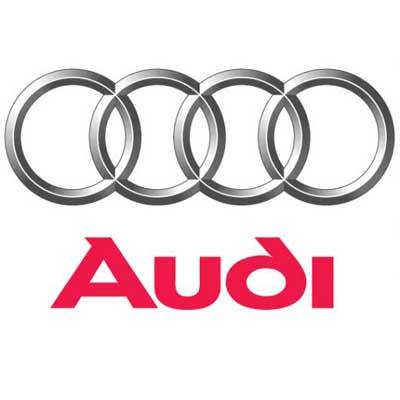
By Rochelle La Mont & Kenric Nilsson
Audi has long been a symbol of technical precision and excellence. When watching Will Smith cruising along the futuristic highways of tomorrow in I, Robot, it all seemed a bit more believable as he was behind the wheel of an Audi.
Audi, like many automobile manufactures, is adapting to rising gas prices by developing mor e economic fuel efficient vehicles. Rubert Stadler, chairman of the board of management, went on record to state, “Ecology & Economy in harmony: For this we have to find the correct balance in every area of mobility.”
Audi is taking the pitfalls that are facing the environment and automobile manufactures' responsibility as a potential contributing factor seriously. While still in the early development stage, Audi is planning to release their “E” line. Five cars, the E-one through five respectively, are very different beasts. The Audi E1 is a compact electric vehicle while the Audi E5 is to be a mid-engined sports car. Ranging from electric, diesel, hybrid, to the light weight sports car, the unifying feature that keeps this diverse family together is low environmental impact and fuel efficiency. Rumors are that the Audi E1 may emerge this year, and the whole line should be on the market by 2014.
Like a handful of other car manufactures, Audi is looking to hydrogen powered vehicles as the alternative fuel horizon we are, hopefully, sailing towards. In the interim, Audi is looking to methane created from hydrogen to be a form of fuel they term “e-gas”. A complex process which involves the methanation of hydrogen by electrolysis creates this new form of fuel. The electricity used to convert the hydrogen will be fed back into the grid. Audi is creating a fleet of wind turbines offshore in the North Sea in order to replenish the energy taken from the grid. Excess e-gas is pumped into an underground gas network as a way to store energy for any number of uses. It is worth mentioning that this entire process is contained so as no gas escapes into the atmosphere in the process of creating this new form of fuel. To take full advantage of this e-gas, Audi is primed to release the A3 TCNG in 2013. This new vehicle is not some flaccid nondescript eco-vehicle but rather a turbo-charged sleek looking sedan that Captain Planet would be proud to drive. The problem with any new form of fuel is, of course, infrastructure. If e-gas distribution is limited to handful of gas stations one's shiny new A3 TCNG would only be limited to a small radius. Audi has gracefully sidestepped this shortcoming by allowing the A3 TCNG to run on conventional fuel as well as their new e-gas, giving Audi time to build up and expand the infrastructure.

